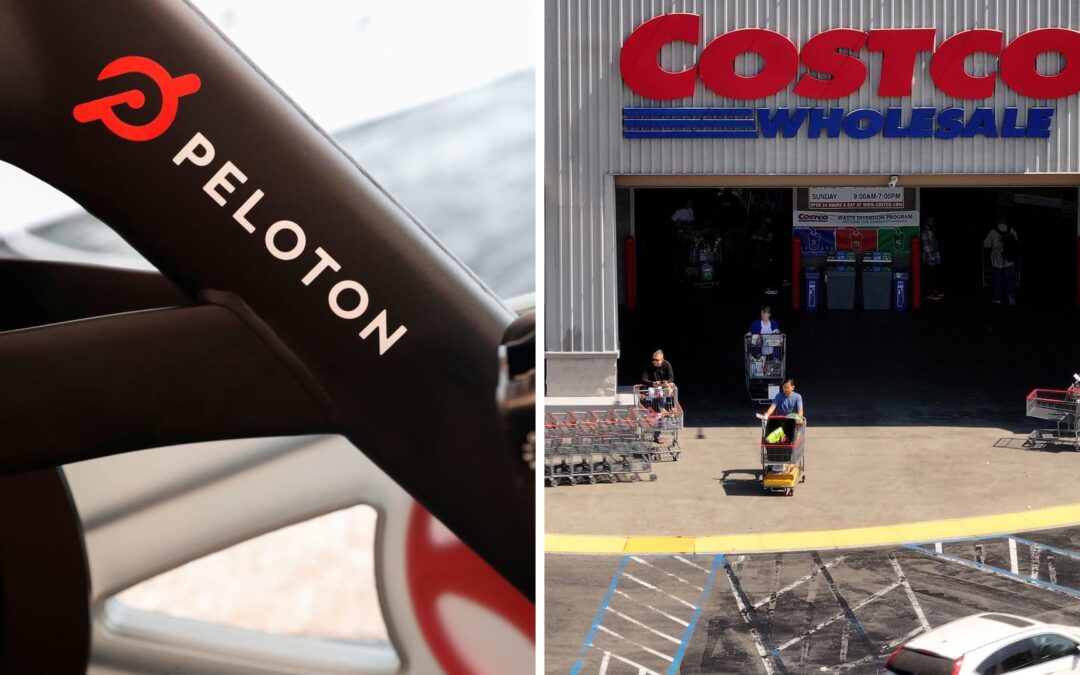Peloton’s stationary bikes will soon sell at Costco’s stores and on its website as the beleaguered fitness company looks for new ways to reach younger and affluent customers, Peloton is set to announce Tuesday.
Under the terms of the deal, Costco will offer Peloton’s Bike+ in 300 of its U.S. stores for $1,999, and on Costco.com for $2,199 between Nov. 1 and Feb. 15. It is a steep discount from the typical price of the Bike+, which is selling on Peloton’s website for $2,495. It is unclear how the price will compare to any holiday promotions Peloton plans to offer.
The new partnership comes during a state of transition for Peloton, which is being led by two board members after its former CEO Barry McCarthy stepped down earlier this year.
Long focused on growth at all costs, Peloton has turned its sights to profitability and has had to become more creative as it tries to reach new users.
As sales fall and losses mount, Peloton is looking for cheaper ways to attract new customers. Costco is one way to get there, Dion Camp Sanders, Peloton’s chief emerging business officer, told CNBC in an interview.
“We’ve been able to architect a deal with Costco that meets our needs with regard to profitable, sustainable unit economics, while at the same time delivering robust and clear value to Costco members,” said Camp Sanders. “We’ve structured this deal with Costco to both meet our needs for profitable, sustainable growth and getting us access to Costco’s very large net incremental audience.”
Camp Sanders said Peloton’s partnership with Costco is only for a limited time because fitness is a seasonal category for the company, but Peloton hopes to keep building on the relationship and perhaps expand it to future locations both in the U.S. and abroad.
The deal with Costco gets Peloton onto the shelves of a retailer with a strong fan following and wealthier customers. The membership-based club has gained popularity as shoppers across all incomes prioritize value and try to get more for their money with bulk packs and private-label items.
As of Sept. 1, store traffic at Costco had increased 31% compared with the same period in pre-pandemic 2019, according to Placer.ai, an analytics company that estimates visits to locations based on smartphone data.
Costco’s members are also getting younger. Those consumers prioritize health and wellness — and are willing to invest in it — in ways that older generations do not.
About half of Costco’s new membership sign-ups last fiscal year came from people who were under 40 years old, and the average age of its 76 million members has fallen since the Covid-19 pandemic, Chief Financial Officer Gary Millerchip said on an earnings call in late September.
According to Numerator, 36% of Costco’s customers have a household income of more than $125,000. Numerator has a panel of 150,000 U.S. consumers that is balanced to be representative of the country’s population.
Camp Sanders said Costco’s members “have the disposable income to be able to afford our premium products,” and their lifestyles align with what Peloton offers.
“Many of Peloton’s members are affluent, they often have larger homes in the suburbs and they also have life situations where Peloton fits a clear need,” said Camp Sanders. “Many Costco members are juggling families, they maybe have a busy career … and they’ve got the space in their home” to build their own gyms, he continued.
Costco’s Executive Vice President of Merchandising Claudine Adamo declined to comment to CNBC.
Peloton already sells its workout equipment through Amazon and Dick’s Sporting Goods, but has also been working to develop relationships with other companies that cater to similar customer bases.
For example, hundreds of Hyatt Hotel properties have Peloton equipment on site. As of this month, hotel members can earn points for completing workouts on the Peloton Bike and Row during their stay.
It also announced a deal with Truemed — the PayPal of the health savings account and flexible spending account world — that allows Peloton members to use pretax earnings to buy certain hardware products, including the Bike, Bike+ and Tread.









